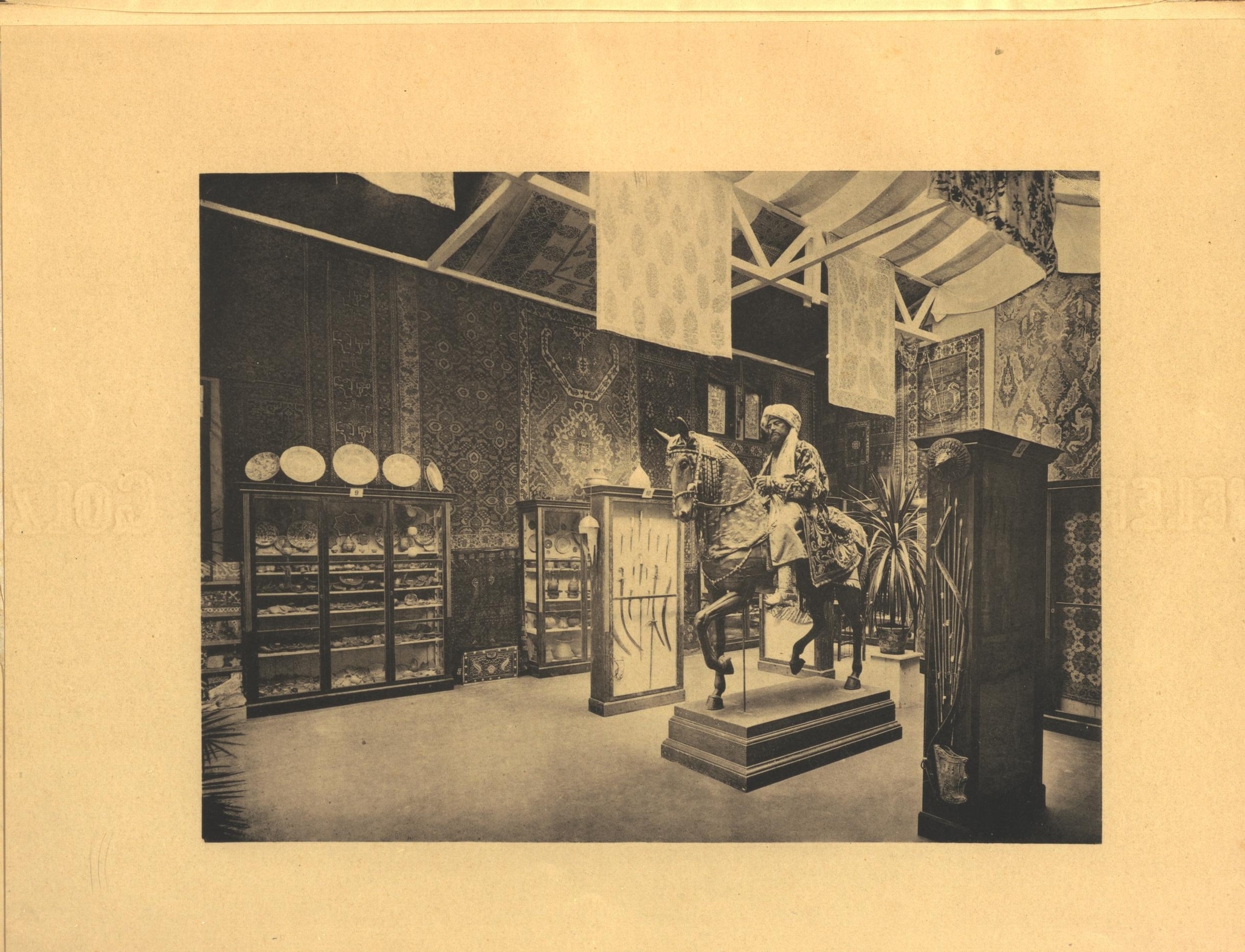Recherche
The catalogue lists stucco and glass windows exhibited somewhere around display cases 7 and 8. They are described as windows made of plaster provided with small coloured glass panes. They are dated to the 16th century and said to be from Cairo (‘Die Fenster sind aus Gips mit kleinen bunten Glasscheiben versehen; XVI. Jahrhundert; Kairo.’; Martins Sammlung, 1897, p. 6). Since this photograph gives an overall view of the exhibition, the windows mentioned are only captured on as small scale in the background. Their typology and design are therefore not clearly recognizable. What can be seen is that the two windows in question are of the same elongated, rectangular shape.
The photograph is an important source of how Islamic Art, and in particular the stucco and glass windows, were displayed at the General Art and Industrial Exposition of Stockholm in 1897. It shows the windows installed in the wall high above the display cases. This allowed visitors to view the windows in a position similar to that in which such windows could be seen in buildings in Cairo. The same exhibition also displayed stucco and glass windows at eye level, giving visitors the opportunity to view the windows up close and observe their details and technique (IG_404, IG_405).
As for their display, we can see a different approach than that adopted for the immersive displays known from the pavilions and their interiors at world’s fairs or from the Islamic-style rooms established by collectors of Islamic art. F. R. Martin’s collection was displayed in closed glass cases with numbers, so that visitors could find the objects listed in the catalogue, and they were prevented from touching them. However, the showcases appear very crowded, and some objects were displayed outside them. The walls were completely covered with carpets. Although these were not understood as decoration, but as individual exhibition pieces listed in the catalogue, in the exhibition of F. R. Martin’s collection the ‘carpets created a homogeneous rich background against which many diverse objects were unified’ (see Kive, 2015, p. 48).
Datation
1897
Lieu de production

